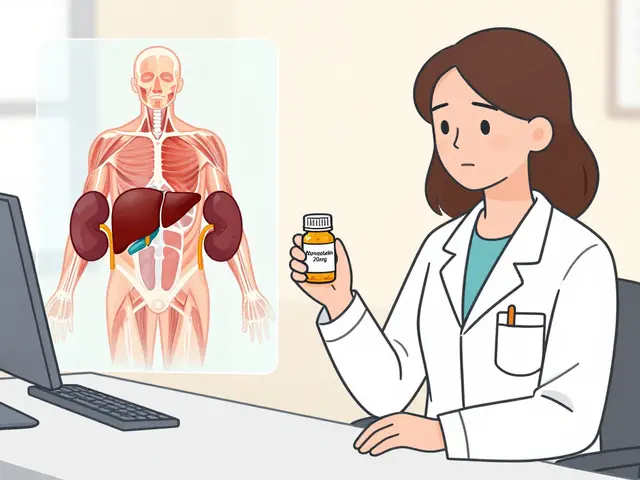Drug combinations: what to watch for and how to stay safe
Mixing medicines can be helpful — or dangerous. Some combinations are prescribed on purpose because they work better together. Others increase side effects, reduce effectiveness, or create new risks like bleeding, breathing trouble, or heart rhythm problems. Knowing a few clear examples and simple checks will protect you and make conversations with your doctor or pharmacist faster and clearer.
Common risky drug combinations (real examples)
Here are pairs you should always double-check. I name the drugs so you recognize them, but always ask your provider about your specific mix.
- SSRIs (like sertraline) + tramadol: raises serotonin levels and can cause agitation, high temperature, or rare but serious serotonin syndrome. Tell your prescriber if you take both.
- Warfarin + antibiotics or NSAIDs: antibiotics such as ciprofloxacin or macrolides can change warfarin levels; NSAIDs (ibuprofen, naproxen) add bleeding risk. Small changes in INR can lead to big problems.
- Benzodiazepines or opioids + alcohol: combining central nervous system depressants increases the chance of dangerous breathing problems and extreme drowsiness. Avoid alcohol if you take these medicines.
- Statins (simvastatin) + strong CYP3A4 inhibitors (clarithromycin, itraconazole): these raise statin levels and can cause muscle damage. Your doctor may switch drugs or lower the dose.
- ACE inhibitor or ARB + potassium-sparing diuretic or supplements: combining these can raise potassium and risk heart rhythm issues. Check potassium labs if your meds change.
Practical steps to check interactions
- Keep one updated list: write every prescription, OTC drug, and supplement on one card or phone note. Bring it to every visit.
- Use a trusted interaction checker: sites run by universities, national health services, or major pharmacies give quick, reliable alerts.
- Ask the pharmacist: pharmacists see many interaction patterns daily. If they pause when you list meds, ask why.
- Stick to one pharmacy when possible: they can track and flag dangerous mixes across prescriptions.
- Watch for warning signs: new severe headache, easy bruising, fainting, confusion, trouble breathing, or a sudden change in sleepiness. Contact your provider or ER if you get these.
Medications are powerful tools. A little caution — a checklist, a quick online check, or a pharmacist call — often stops a problem before it starts. If you’re ever unsure, ask before you mix anything.

Didanosine, an important medication used for HIV treatment, can interact with several other drugs, leading to side effects or decreased effectiveness. This article covers the main ways didanosine interacts with other medications, explains why these reactions matter, and gives practical advice for anyone taking didanosine or caring for someone who is. You'll also find tips from Melbourne healthcare experts and real-life scenarios to help you make safer choices. Avoid dangerous combinations and get the facts you need to protect your health.






